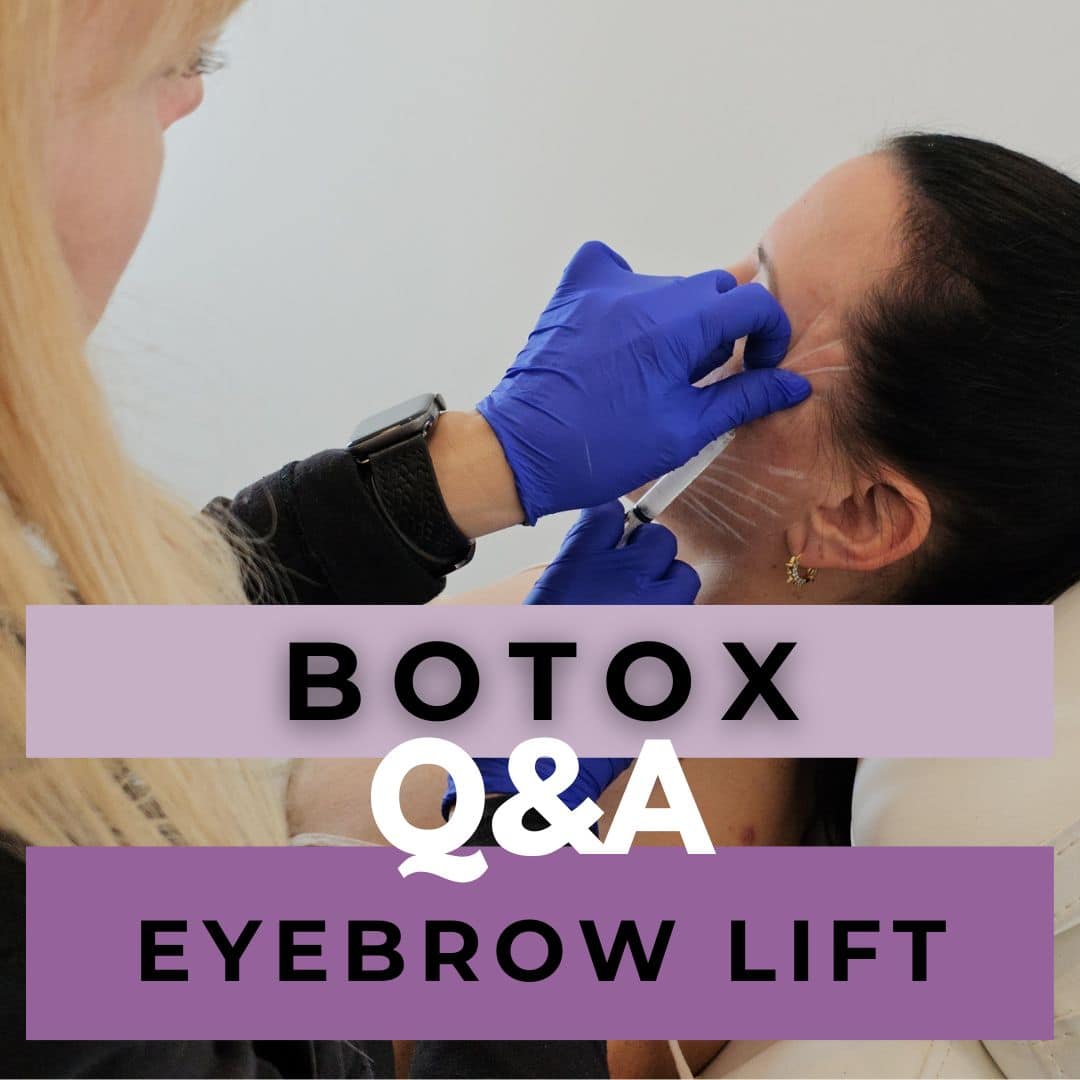Can Botox give you an eyebrow lift?
Botox is a simple and effective way to have a non-surgical brow lift. A Botox brow lift will remove forehead lines, raise sagging eyebrows and reduce the appearance of upper eyelid hooding. A small amount of Botox needs to be injected above the lateral aspect of the eyebrows to lift droopy brows and provide a lift.
How many units are required for a Botox brow lift?
A consultation with one of our medical aestheticians and one of our doctors is required before the treatment to go over all the information, your concerns and to make sure you receive the right treatment for you! 🙂
How much a botox brow lift cost?
The price of our injections will vary, because everyone needs a different amount, and the price goes by how many units are required.
It typically takes between 4-10 units of Botox or Dysport to lift the brows at $12/units. Most patients combine a Botox Brow Lift with other treatment areas such as the horizontal lines of the forehead, “11’s” between the brows and crow’s feet which would increase the number of total units needed.
How long does Botox brow lift last?
It does take a few days, or up to a week, for the results of the injections to become visible. Once your results appear, they usually last for three to four months.
Botox is used to reduce the appearance of fine lines and wrinkles and gives you a rested look. Botox needs to be done every 3 to 4 months to maintain the results.
Does Botox Brow Lift Hurt?
The procedure is pretty much painless and you can get back to work after. Around the eyes, forehead and glabella are the most popular areas.
How does Botox Consultation Works?
The consultation with our doctor is $100 but applied toward your treatment! Usually, the consultation and treatment can be done on the same day.
Please note that we have a cancellation policy in place. Once the treatment is booked, we ask you to provide us with a credit card number. We will not charge your card unless there is a failure to let us know about a cancellation or a “no show”.
Our Blog
Ta-da! I've gathered all the blog posts we've written about Botox in one convenient spot! These little nuggets of wisdom should help you on your journey to learning more about this amazing procedure!
Botox Before & After
What is Botox
- The Dangers of Bad Botox: How to Avoid Unwanted Results
- Is Botox Safe? Debunking the Myths and Misconceptions
- Side Effect of Botox
- How Does Botox Work? Understanding the Mechanism of Action
- What Does Botox Do
- How Long Does Botox Last?
- Botox Treatment
- Botox vs Juvederm: What's the Difference?
- What Is Botox Used For?
Botox For Migraines
- Botox for headaches
- Migraines Botox Injections Sites
Botox Injection
- Botox Consultation
- Botox Under eyes
Botox Underarms
Cost of Botox
- How much is Botox
- Botox Treatment prices
- Is Botox Expensive
- Price for Botox injections in the forehead
- How much does botox cost for forehead wrinkles?
- Is 50 Units of Botox a Lot?
- Units of Botox For Forehead Lines
- How Much Does Botox Cost in Canada? | A Comprehensive Guide
Lip Botox
Advanced Botox Techniques

